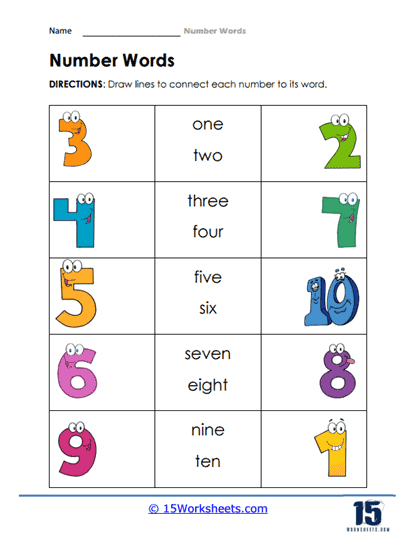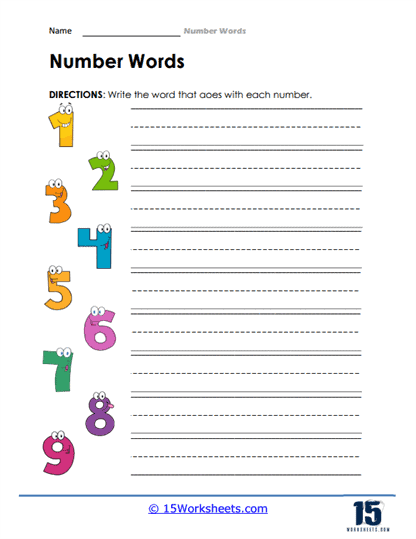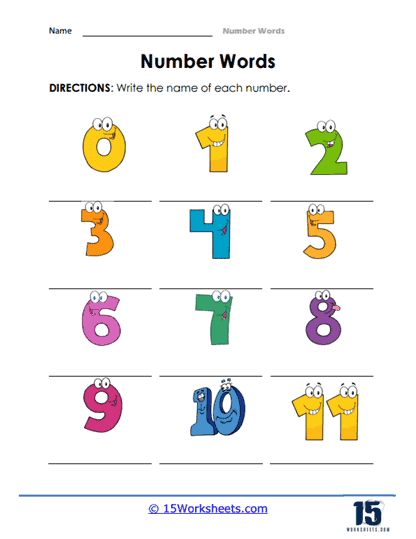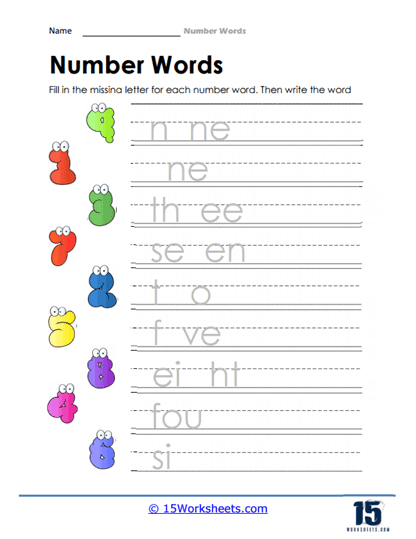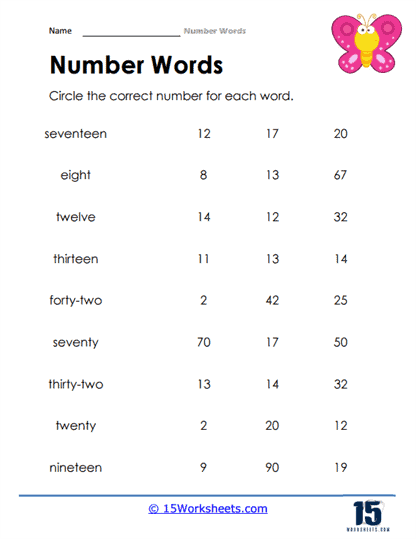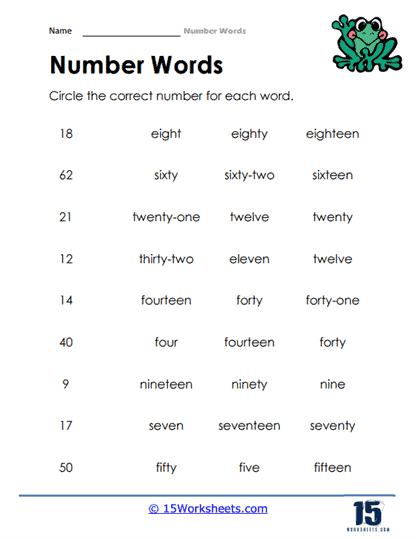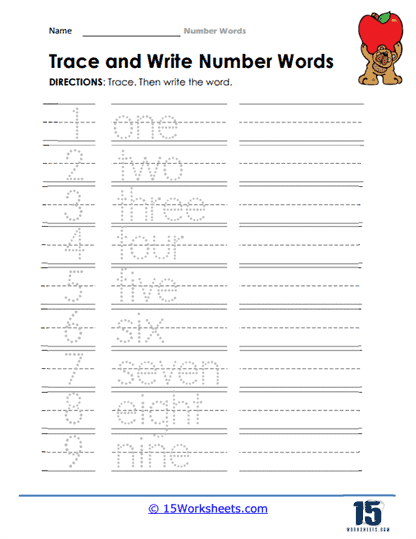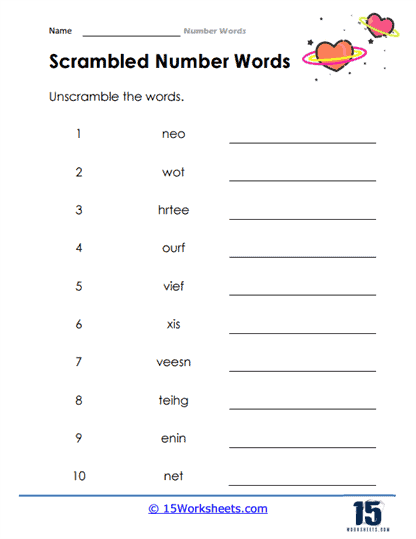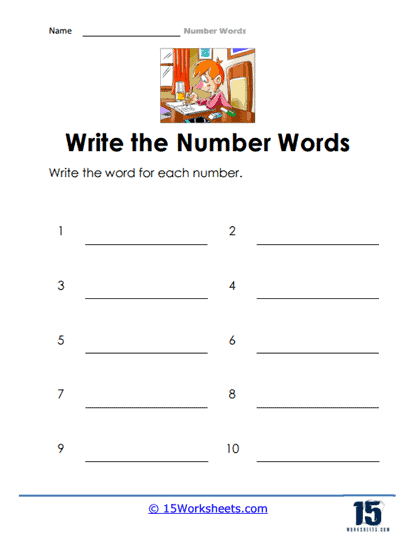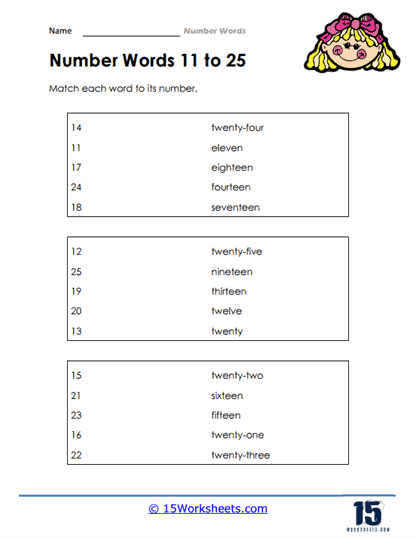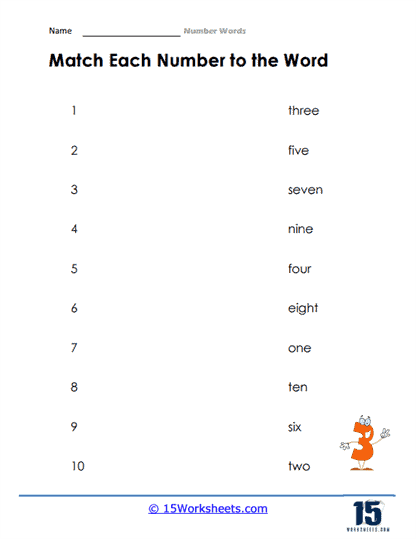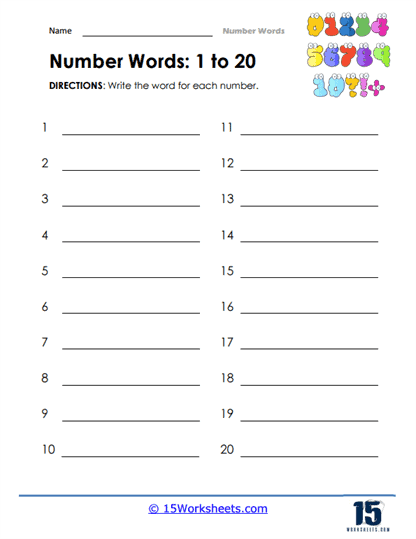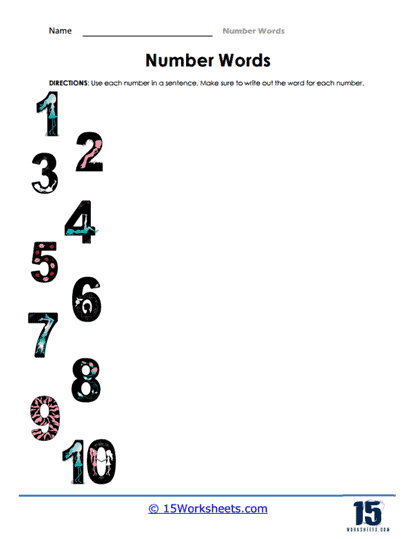Numbers in Words Worksheets
About These 15 Worksheets
Numbers in words worksheets were put together to help children learn and practice writing numbers in their word form. These worksheets focus on associating numerals (e.g., 7, 15, 23) with their corresponding number words (e.g., “seven,” “fifteen,” “twenty-three”). The goal is to help children develop their early numeracy skills, number recognition, and number vocabulary.
Numbers in words worksheets can come in various formats, such as:
Number Word Recognition – Children may be presented with a series of number words (e.g., one, two, three) and asked to match them with the correct numeral (e.g., 1, 2, 3).
Writing Numbers in Words – Students can practice writing the word form of various numbers. For example, they might be given a numerical digit (e.g., 5) and asked to write its corresponding word form (e.g., five).
Matching – Worksheets may require children to match numerals to their corresponding number words or vice versa.
Fill in the Blanks – Children may need to complete sentences or phrases with the appropriate number words or numerals, based on the context provided. Some worksheets will include sentences or short paragraphs with blank spaces where students need to fill in the missing number words. This exercise helps reinforce the correct spelling and usage of number words in context.
Tracing and Writing – Worksheets might provide children with number words to trace and practice writing, improving their spelling and writing skills.
Multiple Choice – Worksheets could present children with multiple-choice questions, asking them to select the correct number word or numeral for a given context.
Word Problems – Children may be given word problems or real-life scenarios that require them to read and write number words in their responses.
What Are the Benefits?
Numbers in words worksheets offer several benefits for children:
Number Recognition – These worksheets help children practice recognizing numerals and their corresponding number words.
Reading and Writing Skills – Working with numbers in words worksheets reinforces children’s reading and writing skills, as they learn to read and spell number words.
Vocabulary Development – Learning the names of numbers expands children’s mathematical vocabulary, which is essential for understanding more advanced math concepts.
Number Sense – Associating numerals with their number words helps develop children’s number sense and understanding of the relationship between numbers.
Confidence – Mastering number words builds confidence in a child’s mathematical abilities, setting the stage for success in more advanced math topics.
These worksheets can be adapted for various age groups and difficulty levels, allowing children to progressively build their understanding of numbers in words.

